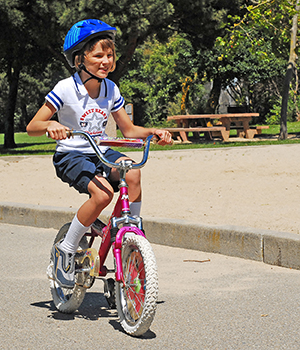Children Living with a Rheumatic Disease
Living with a rheumatic disease
A child living with a rheumatic disease does not necessarily have to live a limited lifestyle. All the members of the family are affected by a child's diagnosis of rheumatic disease, so there must be an effort to maintain as normal a family activity pattern as possible. With correct management, a rheumatic disease may not have to interfere with your child's daily activities over a long period of time.
Exercise and rheumatic disease

Exercise, when done correctly, can help reduce rheumatic disease symptoms, including:
-
Preventing joint stiffness
-
Keeping muscles strong around the joints
-
Improving joint flexibility
-
Reducing swelling
-
Reducing pain
-
Maintaining strong and healthy bone and cartilage tissue
-
Improving joint alignment
-
Improving overall fitness
Exercise is often an integral part of a child's overall treatment plan for pediatric arthritis or other rheumatic diseases. Exercise may also help with increasing your child's sense of well-being. There are 3 main types of exercises that may help children with rheumatic diseases:
-
Range-of-motion. Range-of-motion exercises focus on moving the joints in certain directions to improve flexibility and reduce stiffness.
-
Strengthening. Strengthening exercises help increase or maintain muscle strength around the joints, keeping joints more stable. Two common strengthening exercises include isometric (tightening muscles without using joints) and isotonic (strengthening muscles by using the joints).
-
Fitness. Fitness exercises improve a child's endurance and cardiovascular health, while keeping muscles strong and joints more flexible. Types of fitness exercises appropriate for most children with rheumatic diseases include walking, water exercise, and bicycling.
Always talk with your child's healthcare provider before starting any exercise program for your child. A physical therapist and/or an occupational therapist may be involved in your child's care to assist in exercise and therapy.
Diet and weight management with rheumatic disease
Researchers don't yet fully understand the role of diet and nutrition in rheumatic diseases. Studies are underway to examine the effects of food, weight, and nutrition on the disease. However, the Arthritis Foundation recommends the following dietary guidelines for children with pediatric arthritis and other rheumatic diseases:
-
Variety. Eating a variety of foods from the 5 different food groups supplies your child's body with the nutrients it needs. Staying away from high fat, sugary, or processed foods may reduce inflammation. Fatigue, pain, and certain medicines may make it more difficult for a child with rheumatic disease to eat healthy.
-
Weight. By helping your child maintain a healthy weight, there is reduced strain placed on their weight-bearing joints, such as the knees and hips. A nutritionist should be involved in managing your child's nutritional status.
Helping your child cope with rheumatic disease
Living with chronic pain and fatigue may leave your child feeling depressed and less able to cope with the pain. A cycle of pain, depression, and stress may keep a child from living their life to the fullest. Joining a support group for children and families with rheumatologic disease can often be helpful. Talk to your child's healthcare provider about connecting with a support group. Managing pain in a positive manner and taking charge can help break such a cycle. Part of correct pain management involves making sure your child is getting plenty of rest to preserve energy, including:
-
Adequate sleep. Sleeping 8 to 10 hours a night is important in maintaining your child's energy level and restoring their spirit. Sleep also allows the joints to rest. Sometimes, an afternoon nap helps give the joints a chance to rest.
-
Relaxation. Being able to relax can help minimize the stress in your child's life and minimize symptoms. A relaxed body means the muscles are relaxed, relieving some of the pain associated with rheumatic disease. Many different relaxation methods exist. Talk with your child's healthcare provider for more information.
Online Medical Reviewer:
Dan Brennan MD
Online Medical Reviewer:
Diane Horowitz MD
Online Medical Reviewer:
Raymond Kent Turley BSN MSN RN
Date Last Reviewed:
7/1/2023
© 2000-2025 The StayWell Company, LLC. All rights reserved. This information is not intended as a substitute for professional medical care. Always follow your healthcare professional's instructions.